 What is the meaning of Empty Legs? Empty leg flights refer to one-way private jet flights where the aircraft is returning to its base or repositioning without any passengers on board. These flights become available when a private jet is booked for a one-way trip, and the aircraft needs to return to its original location or move to another location for its next scheduled flight.
What is the meaning of Empty Legs? Empty leg flights refer to one-way private jet flights where the aircraft is returning to its base or repositioning without any passengers on board. These flights become available when a private jet is booked for a one-way trip, and the aircraft needs to return to its original location or move to another location for its next scheduled flight.
Empty leg flights are often cheaper than regular private jet charters for several reasons:
- Operational Efficiency: When a private jet is chartered for a one-way trip, the aircraft would have flown empty back to its home base or next destination. By offering these empty leg flights at a discounted rate, operators can generate some revenue for what would otherwise be an unprofitable leg of the journey.
- Cost Allocation: Private jet operators have fixed costs associated with aircraft maintenance, crew salaries, insurance, and other expenses. By selling empty leg flights, they can partially offset these fixed costs and reduce their financial burden.
- Revenue Maximization: Private jet operators aim to maximize the utilization of their aircraft to generate revenue. By offering empty leg flights at a lower price, they can attract additional customers who may not have considered private jet travel due to the higher costs associated with traditional charters.
- Flexibility: Empty leg flights are often available on short notice and can be subject to change. This flexibility allows operators to adjust pricing to attract potential customers who can be spontaneous with their travel plans.
It’s important to note that empty leg flights have limitations and may not always align with travelers’ specific itineraries or desired routes. These flights are dependent on existing bookings and aircraft availability, so they may not be suitable for all travel needs. However, for those with flexibility and a willingness to accommodate schedule changes, empty leg flights can offer a cost-effective way to experience private jet travel.
Why Are Empty Legs Under Fire From Environmentalists?
Empty leg flights have faced criticism from environmentalists due to their potential negative impact on the environment. Here are a few reasons why they are under scrutiny:
- Carbon Emissions: Empty leg flights contribute to unnecessary carbon emissions. When an aircraft flies without passengers, it still consumes fuel and emits greenhouse gases. These emissions contribute to climate change and air pollution, which are significant concerns for environmentalists.
- Inefficiency: Empty leg flights are considered inefficient because they involve an aircraft flying empty, resulting in wasted resources. Environmentalists argue that these flights contribute to a wasteful use of fuel and other inputs required for air travel.
- Overconsumption: Critics argue that the private jet industry, including empty leg flights, caters to the luxury market and encourages excessive consumption of resources. Private jets typically have a higher carbon footprint per passenger compared to commercial flights, and empty leg flights are seen as a symbol of unnecessary extravagance.
- Perception and Symbolism: Empty leg flights have received negative attention in the media, portraying them as a symbol of excess and inequality. This perception reinforces the idea that private jet travel is environmentally unsustainable and contributes to income disparities.
- Lack of Regulation: Some environmentalists argue that the private aviation industry lacks adequate regulations to address the environmental impact of empty leg flights. They advocate for stricter emissions standards, carbon offsetting programs, and more sustainable practices within the industry.
It’s worth noting that the impact of empty leg flights on the environment is relatively small compared to commercial aviation as a whole. Nevertheless, the attention they receive is due to their association with luxury travel and the environmental concerns surrounding the aviation industry as a whole. Efforts are being made to develop more sustainable aviation practices, such as the exploration of electric or hybrid aircraft and the use of sustainable aviation fuels, to mitigate the environmental impact of private jet travel, including empty leg flights.
How Do You Get Back Home After Taking Advantage Of An Empty Leg Flight?
When you book an empty leg flight, it is typically a one-way trip to a specific destination. Returning home after taking an empty leg flight requires making alternative travel arrangements, as the empty leg flight itself does not include the return journey.
Here are a few common options for returning home:
- Commercial Flights: One option is to book a commercial airline flight for your return journey. You can search for flights on various travel websites or through airline booking platforms. Consider the availability of flights from nearby airports, as the destination of your empty leg flight may not be your nearest airport.
- Private Jet Charter: If you still prefer the convenience and luxury of private jet travel for your return journey, you can consider booking a separate private jet charter. Private jet charter companies offer on-demand services where you can rent a private jet for your desired route and schedule. Keep in mind that chartering a private jet for a one-way trip can be more expensive than booking a round trip.
- Ground Transportation: Depending on the distance and your preferences, you might consider returning home by ground transportation. This could include options such as renting a car, taking a train or bus, or arranging for a private car service.
- Accommodation Arrangements: If your return journey cannot be completed on the same day, you may need to arrange accommodations for an overnight stay. Consider booking a hotel or exploring alternative lodging options, depending on your location and preferences.
It’s important to note that returning home after an empty leg flight requires additional planning and coordination. Be sure to consider factors such as availability, cost, travel time, and any necessary overnight arrangements when deciding on the best option for your return journey. Luckily, Emptylegs.net is your go-to source for discovering return empty leg flights, provided you have the availability and time to seize these incredible opportunities. In our upcoming discussion, we will delve into the pricing strategies and marketing techniques employed for Empty Leg flights. Meanwhile, don’t forget to Be Social, Fly Private!

 Private aircraft safety reviews after a known model crash are an important part of the emptylegs.net client safety commitment. The recent incident over Washington, D.C., where a pair of U.S. F-16 fighter jets generated a resounding sonic boom while attempting, unsuccessfully, to establish contact with an unresponsive pilot of a privately-owned Cessna jet that had strayed into restricted airspace on Sunday triggers the review. The Cessna subsequently descended and crashed in a rural area of Virginia. The reason behind the Cessna’s presence in Washington remains unclear, but the owner of the aircraft suggested that a possible loss of cabin pressure could have rendered the pilot and passengers unconscious, potentially leading to the autopilot assuming control. Promptly dispatched from Joint Base Andrews, the F-16s were deployed to intercept the aircraft. Defense officials have clarified that the fighter jets were not responsible for the crash of the Cessna.
Private aircraft safety reviews after a known model crash are an important part of the emptylegs.net client safety commitment. The recent incident over Washington, D.C., where a pair of U.S. F-16 fighter jets generated a resounding sonic boom while attempting, unsuccessfully, to establish contact with an unresponsive pilot of a privately-owned Cessna jet that had strayed into restricted airspace on Sunday triggers the review. The Cessna subsequently descended and crashed in a rural area of Virginia. The reason behind the Cessna’s presence in Washington remains unclear, but the owner of the aircraft suggested that a possible loss of cabin pressure could have rendered the pilot and passengers unconscious, potentially leading to the autopilot assuming control. Promptly dispatched from Joint Base Andrews, the F-16s were deployed to intercept the aircraft. Defense officials have clarified that the fighter jets were not responsible for the crash of the Cessna.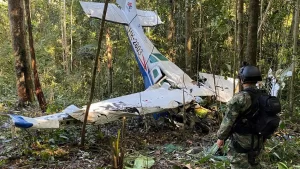
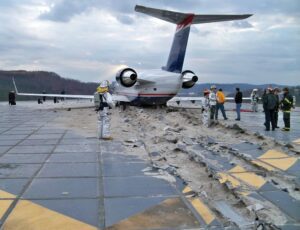 Is private aviation Overweight or Underweight? Recent stories related to the losses over at Wheels Up has made me ponder this question. Wheels Up, intended to be the next success story following Kenny Dichter’s triumphs in the private aircraft charter industry, the company took an unexpected turn as he steps down amidst mounting losses and a plummeting stock value. The company has struggled to overcome its substantial losses, which amounted to an astonishing $555 million last year. While the company has expressed its ability to mitigate these losses next year, Wall Street has already rendered its opinion and the stock, listed on the New York Stock Exchange, dropped from its initial offering price of approximately $10 in July 2021 to about 25 cents at the most recent evaluations. To prevent delisting from the Exchange, a proposal for a reverse stock split has been put forth – a clear warning sign of failure. Forced to leverage the planes it owns, Wheels Up managed to accumulate a substantial cash reserve of $585 million by the end of 2022, but this amount diminished to $363 million by the end of March, and at the current burn rate of expenditure, the remaining cash reserves might only last until the end of this summer. Also keep in mind those losses include over $76 million taken in PPP loans!
Is private aviation Overweight or Underweight? Recent stories related to the losses over at Wheels Up has made me ponder this question. Wheels Up, intended to be the next success story following Kenny Dichter’s triumphs in the private aircraft charter industry, the company took an unexpected turn as he steps down amidst mounting losses and a plummeting stock value. The company has struggled to overcome its substantial losses, which amounted to an astonishing $555 million last year. While the company has expressed its ability to mitigate these losses next year, Wall Street has already rendered its opinion and the stock, listed on the New York Stock Exchange, dropped from its initial offering price of approximately $10 in July 2021 to about 25 cents at the most recent evaluations. To prevent delisting from the Exchange, a proposal for a reverse stock split has been put forth – a clear warning sign of failure. Forced to leverage the planes it owns, Wheels Up managed to accumulate a substantial cash reserve of $585 million by the end of 2022, but this amount diminished to $363 million by the end of March, and at the current burn rate of expenditure, the remaining cash reserves might only last until the end of this summer. Also keep in mind those losses include over $76 million taken in PPP loans! EBACE stands for the European Business Aviation Convention & Exhibition. It is an annual event held in Geneva, Switzerland that serves as a meeting place for leaders in the business aviation industry in Europe and beyond. The event provides a forum for manufacturers, suppliers, and service providers to showcase their products and services, network with industry peers, and discuss the latest trends and developments in the field of business aviation. EBACE features exhibits of aircraft, avionics, engines, and other related products and services. In addition, the event includes educational sessions, keynote speeches, and other presentations focused on business aviation topics such as safety, sustainability, and regulatory issues. EBACE is jointly hosted by the National Business Aviation Association (NBAA) and the European Business Aviation Association (EBAA). The event typically attracts thousands of attendees from around the world and is considered one of the premier events in the business aviation industry.
EBACE stands for the European Business Aviation Convention & Exhibition. It is an annual event held in Geneva, Switzerland that serves as a meeting place for leaders in the business aviation industry in Europe and beyond. The event provides a forum for manufacturers, suppliers, and service providers to showcase their products and services, network with industry peers, and discuss the latest trends and developments in the field of business aviation. EBACE features exhibits of aircraft, avionics, engines, and other related products and services. In addition, the event includes educational sessions, keynote speeches, and other presentations focused on business aviation topics such as safety, sustainability, and regulatory issues. EBACE is jointly hosted by the National Business Aviation Association (NBAA) and the European Business Aviation Association (EBAA). The event typically attracts thousands of attendees from around the world and is considered one of the premier events in the business aviation industry.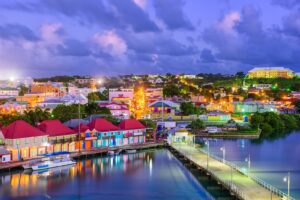
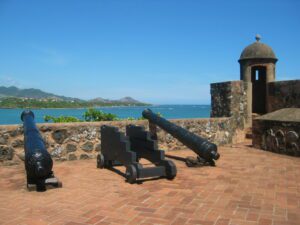 Tomorrow is our first stop on our 10-day Eastern Caribbean cruise, the beautiful city of Puerto Plata in the Dominican Republic. Located on the northern coast of the island, Puerto Plata is known for its stunning beaches, vibrant culture, and rich history. When we arrive at port, we will be greeted by the warm sun, crystal-clear waters, and the lively rhythms of merengue music. I’m sure it will be an unforgettable experience. One of the highlights of our visit will be to explore the historic Fort San Felipe, which was built in the 16th century to protect the city from pirates and foreign invaders. The fort is now a museum, where we will learn about the history of the island and its many battles.
Tomorrow is our first stop on our 10-day Eastern Caribbean cruise, the beautiful city of Puerto Plata in the Dominican Republic. Located on the northern coast of the island, Puerto Plata is known for its stunning beaches, vibrant culture, and rich history. When we arrive at port, we will be greeted by the warm sun, crystal-clear waters, and the lively rhythms of merengue music. I’m sure it will be an unforgettable experience. One of the highlights of our visit will be to explore the historic Fort San Felipe, which was built in the 16th century to protect the city from pirates and foreign invaders. The fort is now a museum, where we will learn about the history of the island and its many battles. The final stop will be the Ron Macorix Factory just in case we need something to go along with the Cigars and the Chocolate. The factory is dedicated to producing high-quality, premium rum using traditional methods and locally sourced ingredients. We will take a guided tour of the facility, which includes a walk through the rum-making process. The tour begins with an introduction to the history of rum and the origins of sugar cane, the key ingredient used in rum production. We can then observe the various stages of rum production, from the fermentation and distillation of the sugar cane juice to the aging and blending of the finished product. We will get the chance to taste the different types of rum produced at the factory, including dark and light rum, as well as flavored varieties. I think you can also sample a variety of rum-based cocktails made on-site, using the factory’s premium rum as a base. The Ron Macorix Factory also offers workshops where visitors can learn to make their own rum cocktails and traditional Dominican dishes, under the guidance of experienced chefs and bartenders.
The final stop will be the Ron Macorix Factory just in case we need something to go along with the Cigars and the Chocolate. The factory is dedicated to producing high-quality, premium rum using traditional methods and locally sourced ingredients. We will take a guided tour of the facility, which includes a walk through the rum-making process. The tour begins with an introduction to the history of rum and the origins of sugar cane, the key ingredient used in rum production. We can then observe the various stages of rum production, from the fermentation and distillation of the sugar cane juice to the aging and blending of the finished product. We will get the chance to taste the different types of rum produced at the factory, including dark and light rum, as well as flavored varieties. I think you can also sample a variety of rum-based cocktails made on-site, using the factory’s premium rum as a base. The Ron Macorix Factory also offers workshops where visitors can learn to make their own rum cocktails and traditional Dominican dishes, under the guidance of experienced chefs and bartenders. 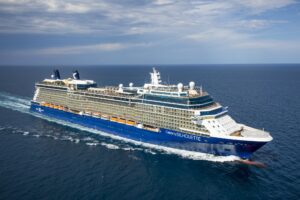 Planning a Strategic Retreat in today’s fast-paced business world means taking a break from the daily grind to recharge and refocus. Many successful entrepreneurs and business owners find that stepping away from their work for a short period of time can actually increase their productivity and creativity. In fact, taking a vacation or planning a strategic retreat can be a smart business move. In this case, Katie and I have decided to take a 10-day Eastern Caribbean cruise to not only relax and recharge, but also to do some strategic business planning for our next ventures. Of course, the rest of the Emptylegs team will be available for any air charter needs or request while we travel. At first we considered an Eastern Caribbean island hopping yacht charter, but we sailed last year on the Celebrity Summit, and we remembered what a great trip we had during my birthday celebration. We searched and found a great cruise on the only Cruise Line we will sail, Celebrity Cruises, and decided to add more points to our Captains Club balance booking the trip. We chose the 10 day Eastern Caribbean Cruise aboard the Celebrity Silhouette because it includes some of our favorite private jet travel islands, which will allow us to mix business with pleasure.
Planning a Strategic Retreat in today’s fast-paced business world means taking a break from the daily grind to recharge and refocus. Many successful entrepreneurs and business owners find that stepping away from their work for a short period of time can actually increase their productivity and creativity. In fact, taking a vacation or planning a strategic retreat can be a smart business move. In this case, Katie and I have decided to take a 10-day Eastern Caribbean cruise to not only relax and recharge, but also to do some strategic business planning for our next ventures. Of course, the rest of the Emptylegs team will be available for any air charter needs or request while we travel. At first we considered an Eastern Caribbean island hopping yacht charter, but we sailed last year on the Celebrity Summit, and we remembered what a great trip we had during my birthday celebration. We searched and found a great cruise on the only Cruise Line we will sail, Celebrity Cruises, and decided to add more points to our Captains Club balance booking the trip. We chose the 10 day Eastern Caribbean Cruise aboard the Celebrity Silhouette because it includes some of our favorite private jet travel islands, which will allow us to mix business with pleasure.  Textron Aviation is an exceptional aircraft manufacturer that offers an impressive range of private planes for air charter. Their commitment to quality and innovation is evident in their aircraft designs, which are sleek, modern, and equipped with advanced technology. They offer a diverse range of private planes suitable for various travel needs. Whether you need a plane for business travel or leisure, Textron Aviation has a plane that can meet your requirements. The comfort and luxury of their private planes are unmatched. The cabins are spacious and well-appointed, providing a comfortable and relaxing environment for passengers during their flights.
Textron Aviation is an exceptional aircraft manufacturer that offers an impressive range of private planes for air charter. Their commitment to quality and innovation is evident in their aircraft designs, which are sleek, modern, and equipped with advanced technology. They offer a diverse range of private planes suitable for various travel needs. Whether you need a plane for business travel or leisure, Textron Aviation has a plane that can meet your requirements. The comfort and luxury of their private planes are unmatched. The cabins are spacious and well-appointed, providing a comfortable and relaxing environment for passengers during their flights.  Who We Are/What We Do
Who We Are/What We Do